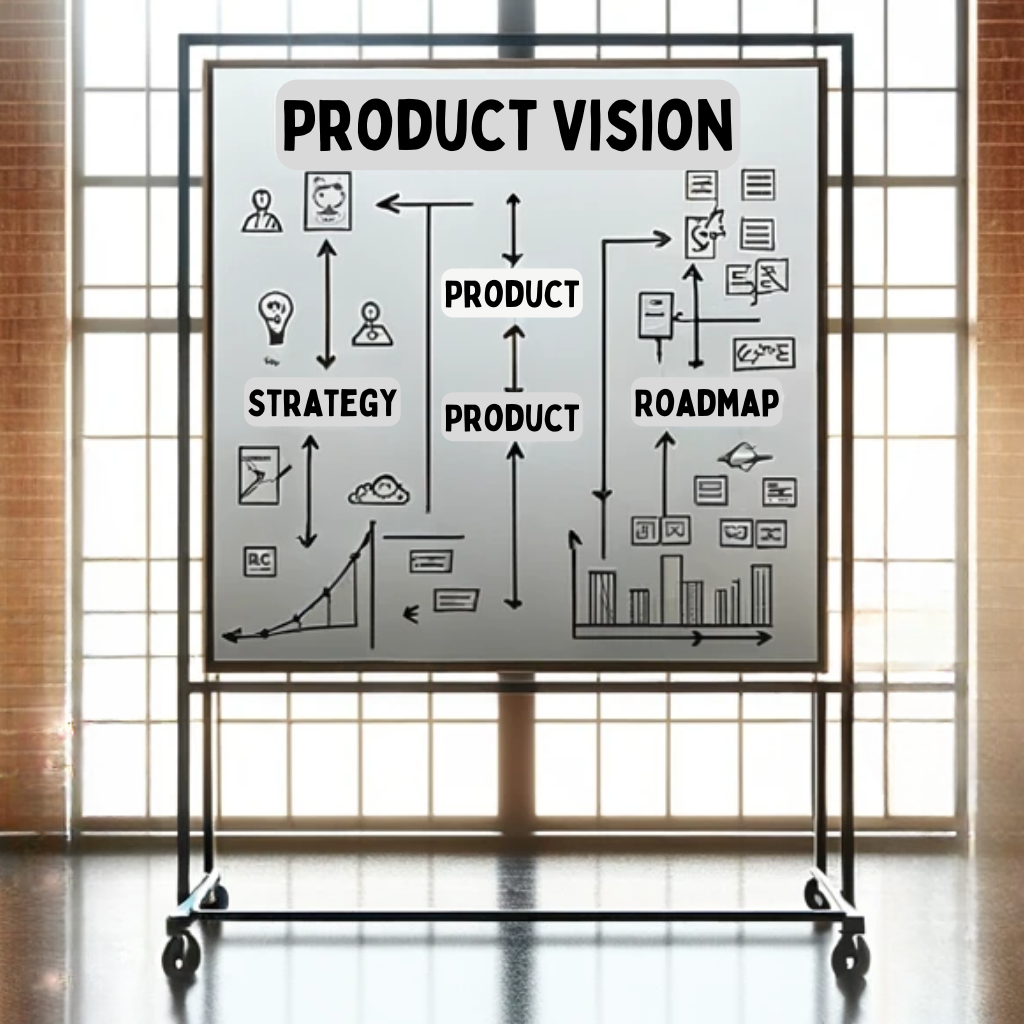Introduction
In the ever-changing world of products and services, understanding how to position your product is a critical determinant of success.
A well-defined product positioning and messaging framework not only allows you to differentiate your offering but also drives how customers perceive your product.
It’s a strategic compass that influences your product design, marketing strategies, and customer interactions. In this blog post, we’ll deep dive into what product positioning is, why it’s important, and how you can develop and refine a powerful product positioning and messaging framework.
I’ll provide you with actionable steps and strategies that have been honed over years of experience in the digital marketing field.
Understanding Product Positioning
Imagine you’re at a party. Everyone is mingling, exchanging pleasantries, and trying to make a memorable impression. Now, think of your product as one of the party-goers. How it mingles, communicates, and leaves an impression on others represents its positioning.
Product positioning, in its essence, is about carving out a unique place in the market and the minds of your customers. It’s not just about what you sell, but how you sell it, how you differentiate it from competitors, and how it aligns with your customer’s needs and expectations. It shapes the perception of your product and influences whether customers choose your product over your competitors.
Consider Apple, a prime example of effective product positioning. Apple’s products are not just electronics; they are positioned as a seamless blend of high-quality design, advanced technology, and superior user experience. This unique positioning — as premium, innovative, and user-friendly — distinctly sets Apple apart from many competitors in the saturated tech industry.
But remember, effective product positioning isn’t static; it evolves with changing market dynamics, customer preferences, and product lifecycle. It requires continuous research, testing, and adjustment. But when done right, it gives your product a competitive edge, shapes your marketing strategies, and drives business growth.
In the following sections, we’ll delve deeper into how you can define and refine your product positioning and integrate it into a robust messaging framework.
The Role of Messaging in Product Positioning
Next, we delve into the vital element that breathes life into your positioning — product messaging. It’s the narrative, the story, the compelling dialogue you create around your product. It articulates the essence of your product, highlights its unique qualities, and addresses the problems it solves for your customers.
Think of product messaging as your product’s voice. It’s the conversation your product initiates with your target audience, speaking directly to their needs and desires. It’s how your product says, “Hey, I understand your problem, and I’m the solution you’ve been looking for.”
So what’s the aim of all this chatter? It’s simple but challenging – to convincingly articulate why your product is the standout choice in a sea of alternatives. This is where your understanding of your target audience, their pain points, and your product’s unique value comes into play.
Take Slack as an example. In the crowded landscape of collaboration tools, Slack stands out with its straightforward yet compelling messaging. They revolve their narrative around the mantra of making “work life simpler, more pleasant, and more productive”. This message directly addresses their target audience’s needs — businesses looking for an efficient, user-friendly platform to improve team collaboration.
Slack’s messaging doesn’t just stop at being clear and concise. It extends to the tone and language they use – friendly, casual, and inclusive. It’s reflected in every interaction, from their website copy and app interface to customer support and social media communication. This consistency reinforces their positioning and strengthens their brand perception.
But remember, just like product positioning, effective product messaging isn’t a one-and-done deal. It’s dynamic, evolving with your product, market trends, and customer expectations. It involves testing, refining, and sometimes even overhauling your narrative to stay relevant and compelling.

Essential Elements of a Product Positioning and Messaging Framework
You’re now familiar with product positioning and messaging. The next challenge? Fusing these two into a comprehensive, powerful framework that will guide your product strategy. To do this, there are five critical elements you need to ponder:
1. Target audience: This is your starting point. Understand who your customers are — their demographic characteristics, psychographics, preferences, behaviors, pain points, and aspirations. Develop buyer personas to get a more precise understanding of your ideal customers. Ask questions like, “What do they value in a product? What are their expectations? What problems are they looking to solve?” This deep understanding of your target audience will serve as the bedrock of your positioning and messaging.
2. Unique Selling Proposition (USP): Here’s where you articulate your distinctiveness. What makes your product different? Why should customers choose you over a sea of alternatives? Your USP can be anything from a unique feature, superior customer service, unmatched quality, or even your brand story. The key is to find something that not only sets you apart but is also valuable to your target audience.
3. Competitive Analysis: Knowing your competition is as crucial as knowing your customers. Who are the other players in your market? How does your product stack up against theirs? A thorough competitive analysis will reveal your competitors’ strengths and weaknesses, providing you with opportunities to differentiate your product and fill gaps in the market.
4. Value Proposition: Your value proposition shines a spotlight on the tangible benefits your product offers. This isn’t just about listing product features. Instead, it’s about translating those features into benefits. How does your product solve your customers’ problems or enhance their lives? Ensure your value proposition is specific, compelling, and speaks directly to your target audience’s needs and desires.
5. Brand Personality: If your brand were a person, what would they be like? This personality is vital as it dictates the tone of voice and overall vibe of your messaging. It’s about deciding whether you want to come across as quirky and fun, or serious and professional, or any other persona that fits your brand. It should resonate with your audience and be consistent across all channels.
Understanding and integrating these five components will allow you to craft a product positioning and messaging framework that is holistic, compelling, and effective. It’s about creating a narrative that resonates with your target audience and positions your product as the ideal choice in the market.
Step-by-Step Guide to Creating Your Own Product Positioning and Messaging Framework
Now, let’s get started creating your own product positioning and message framework.
Step 1: Identify your target market.
The journey to a compelling product positioning and messaging framework begins with knowing your customers like the back of your hand. Understand their demographic details, preferences, pain points, buying habits, and lifestyle. Dive deep into market research, customer interviews, surveys, and data analytics to construct detailed buyer personas. Each persona should feel like a real person, with a name, a face, a job, and even a family. These personas will serve as a valuable guidepost in your decision-making process.
Step 2: Understand your competition.
With a clear understanding of your customers, it’s time to shift the lens towards your competition. Conduct a comprehensive competitive analysis to unearth critical insights about your market. Analyze your competitors’ product offerings, pricing models, customer service policies, marketing tactics, and more importantly, their positioning and messaging strategies. Use tools like SWOT analysis to identify your competitors’ strengths, weaknesses, opportunities, and threats. This process will not only help you pinpoint gaps in the market but also uncover unique angles to differentiate your product.
Step 3: Determine your unique selling proposition.
As you gain clarity about your target market and competition, it’s time to define your product’s unique selling proposition (USP). The USP is the essence of what makes your product different from the rest. It could be anything from a unique feature, superior customer service, an innovative approach, or even a compelling brand story. For instance, Tesla’s USP lies in their commitment to sustainability through high-performing electric vehicles. When defining your USP, make sure it’s something that matters to your target audience and is hard for competitors to imitate.
Step 4: Define your value proposition.
A strong value proposition is integral to an effective product positioning and messaging framework. Your value proposition explains why customers should buy from you by articulating the tangible results they’ll achieve. This isn’t just about listing features; it’s about painting a vivid picture of the outcomes your customers will experience. For instance, instead of saying your productivity app has a time-tracking feature, explain how it saves users an average of 10 hours per week. Always highlight the benefits, not just the features.
Step 5: Establish your brand personality.
The final step in creating your framework is defining your brand personality. This personality will guide the tone and style of your messaging. Think of your brand as a person. What would they be like? Would they be casual and fun, like the friendly neighbor next door (think Innocent Drinks)? Or would they be more formal and authoritative, like a seasoned industry expert (think IBM)? Once you define this, align all your communications – from website content to customer service interactions – with this personality. This will ensure consistency, helping to build trust and rapport with your customers.
Now that we’ve expanded on each step, it’s clear that creating a product positioning and messaging framework is no small task. It requires deep research, strategic thinking, and a solid understanding of your customers and market. But with this step-by-step guide, you’re well on your way to crafting a compelling framework that sets your product apart.
Do you want more insights on how to use AI as a Product Manager?
Implementing Your Product Positioning and Messaging Framework
Now that you’ve meticulously crafted your product positioning and messaging framework, it’s time to let it loose. This is where you start applying it across all facets of your product experience. However, it’s not just about scattering your message haphazardly; it’s about ensuring its consistency and resonance across every customer touchpoint.
- Website and Digital Presence: Your website is often the first port of call for potential customers, making it crucial in establishing your product’s position. Ensure your messaging is prominently displayed on your homepage, product pages, and about us section. Similarly, maintain consistency in your messaging across other digital platforms like blogs, newsletters, and downloadable resources.
- Social Media: Social platforms offer a great opportunity to reinforce your product positioning and messaging. From the content you share to the way you engage with your audience, every interaction should reflect your brand personality and USP. Consistency across different social media platforms will strengthen your brand identity and help build trust with your audience.
- Product Packaging and Design: If applicable, your product’s physical attributes, including its packaging and design, should align with your positioning and messaging. This not only attracts the right customers but also enhances their user experience.
- Customer Service: Customer service interactions are a critical touchpoint to express your brand personality and reinforce your messaging. Ensure your customer service team understands your product positioning and can communicate your brand’s values effectively.
- Sales and Marketing Collateral: Your sales presentations, brochures, and other marketing materials should align with your product positioning and messaging. They should highlight your USP and value proposition clearly and convincingly.
Remember, the most effective message is simple, clear, and focused. It’s not about using high-sounding words or industry jargon that might alienate your customers. Instead, it’s about speaking in a language your customers understand and appreciate. It’s about communicating the value of your product in a way that resonates with them and prompts them to action.
The Power of Iteration: Evaluating and Refining Your Framework Over Time
Creating a product positioning and messaging framework isn’t a set-it-and-forget-it affair. It’s not a static document to be stashed away in some forgotten digital drawer. Instead, it’s a dynamic, evolving entity that grows and adapts with your market, your product’s life cycle, and most importantly, your customers’ changing needs and expectations.
1. Harness the Power of Analytics: Digital platforms offer a wealth of data that can provide valuable insights into the effectiveness of your positioning and messaging. Website analytics can show you how users are interacting with your content. Social media metrics can reveal what type of posts resonate most with your audience. Email campaign stats can help you understand what messaging drives higher open and click-through rates. Regularly reviewing and interpreting these analytics can help you make data-driven adjustments to your framework.
2. Listen to Your Customers: There’s no substitute for direct feedback from your customers. Surveys, feedback forms, customer reviews, and even direct conversations can shed light on how your audience perceives your product and its value. They can reveal if your messaging is hitting the mark or missing it entirely.
3. Stay Tuned to Market Dynamics: Markets aren’t stagnant; they are continuously changing and evolving. New competitors enter the field, customer preferences shift, and technology advancements can quickly make existing products obsolete. Regularly conducting market research and competitor analysis will ensure your product positioning remains relevant and compelling.
4. Embrace the Iterative Process: The key to a successful product positioning and messaging framework lies in your willingness to iterate. Don’t be afraid to tweak, adjust, and refine your framework as you gather more information. Remember, every change is an opportunity to improve, to get closer to that perfect resonance with your target audience.
Evaluating and refining your framework might seem like a daunting task, but it’s this continual improvement that keeps your product relevant, competitive, and successful. It’s this adaptability that aligns your product with the shifting tides of customer expectations, ensuring your product remains their preferred choice. So, embrace the iterative journey, because every step forward, no matter how small, is progress.
Creating, implementing, and refining your product positioning and messaging framework is a journey. It demands a keen understanding of your customers, a clear vision of your product’s unique value, and a relentless pursuit of resonance with your audience. It’s a dynamic, evolving process that demands your ongoing attention and dedication.
However, remember that this isn’t a sprint; it’s a marathon. The most powerful frameworks are not those created in haste, but those meticulously crafted, relentlessly tested, and continuously refined over time. It’s about embracing the iterative journey, adapting to the shifting landscape, and striving for the perfect alignment between your product and your audience’s needs and expectations.
The power of a well-defined product positioning and messaging framework lies in its ability to influence perception, shape decisions, and ultimately, drive growth. So, whether you’re a seasoned product manager or a start-up founder, harness this power, and let your product stand tall amidst the clamor of the marketplace.
FAQ
What exactly is a “positioning and messaging framework”?
A positioning and messaging framework is a strategic tool that guides how you communicate the value of your product to your target audience. It involves defining your product’s unique place in the market (product positioning) and crafting a compelling narrative around it (product messaging). This framework not only differentiates your product but also influences how customers perceive and choose your product.
Can you further explain what “product messaging” is?
Product messaging is essentially the voice of your product. It’s the story, the dialogue you create to articulate what your product is, what unique value it offers, and how it addresses your customers’ problems. It’s not just about listing product features; it’s about explaining how these features translate into tangible benefits for your customers.
How is “product positioning” different from “product messaging”?
While they are closely related, they play different roles in your overall strategy. Product positioning is about defining where your product stands in the market relative to your competitors. It involves identifying your target audience, understanding their needs, and carving out a unique niche that aligns your product with these needs. On the other hand, product messaging is about crafting a compelling narrative that communicates your product positioning. It’s about using the right words, tone, and channels to articulate your product’s unique value and convince your audience to choose you.
Why is a “positioning and messaging framework” important for my product?
A well-defined positioning and messaging framework is crucial for a few reasons. Firstly, it helps differentiate your product in a crowded marketplace. It gives your product a unique identity, setting it apart from the competition. Secondly, it influences how customers perceive your product and whether they choose it over others. By aligning your product with your customers’ needs and expectations, it increases the likelihood of them choosing your product. Lastly, it guides your product design, marketing strategies, and customer interactions, ensuring a consistent and compelling customer experience.
How do I create a powerful “positioning and messaging” framework?
Creating a powerful positioning and messaging framework involves a few key steps. Firstly, you need to deeply understand your target audience and their needs. Secondly, you need to define your product’s unique selling proposition (USP) that sets it apart from competitors. Thirdly, you need to conduct a thorough competitive analysis to understand your market landscape. Then, you need to articulate your product’s value proposition that translates your product features into tangible benefits. Lastly, you need to establish your brand personality that dictates the tone and style of your messaging. Integrating all these elements will allow you to craft a compelling framework that resonates with your audience and positions your product as the ideal choice in the market.


